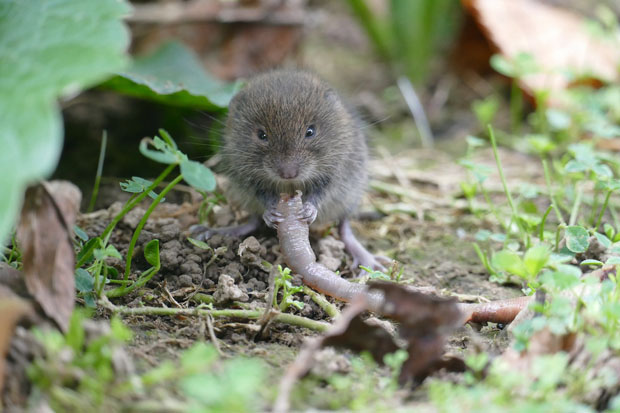Vole Lawn Damage Solutions: Effective Control Approaches
Vole Lawn Damage Solutions: Effective Control Approaches
Blog Article
Comprehensive Guide to Efficient Vole Bug Control: Invasion Identification and Treatment Techniques
In the realm of reliable pest control, vole problems present an one-of-a-kind difficulty that demands a strategic approach. These tiny rodents, commonly mistaken for mice, can wreak mayhem on yards, yards, and plants if left unchecked. Determining the indicators of vole existence and executing targeted therapy methods are essential elements of an effective pest management strategy. By exploring the nuances of vole actions, understanding crucial signs of invasion, and assessing a series of control options, one can establish a detailed technique to deal with these evasive parasites.
Recognizing Vole Habits
Vole habits is defined by their burrowing practices and rapid reproduction prices, making them a tough parasite to manage properly. Their rapid reproductive rate further complicates control initiatives, with ladies qualified of generating multiple litters in a solitary year, each containing several spawn.
Voles are most energetic throughout the morning and night hours, investing the majority of their time foraging for food. Their delving practices not just interrupt yards and yards however likewise make them testing to identify and get rid of. Comprehending vole behavior is essential for reliable insect control approaches. By recognizing their burrow locations, keeping track of feeding locations, and implementing targeted control methods, such as capturing or habitat modification, vole invasions can be managed effectively.
Signs of Vole Infestation

Prevention Approaches
Carrying out efficient avoidance strategies is important in lessening vole invasions and securing greenery from their destructive feeding behaviors (vole control utah). To stop vole invasions, it is important to start by removing possible food sources and shelter. Maintain yard and greenery trimmed short, get rid of weeds and debris, and preserve a neat yard or grass to make the area less appealing to voles. Mounting obstacles such as equipment towel or underground fencing can also help discourage voles from going into details locations. In addition, reducing excess dampness by taking care of leaky pipes and ensuring appropriate water drainage can make the environment less hospitable for voles.
Frequently evaluating the property for signs of vole task, such as paths and tunnel openings, is crucial for very early detection and timely activity. If vole activity is believed, consider utilizing repellents or traps purposefully positioned near their pathways.
Non-Lethal Control Approaches
To properly manage vole populations while focusing on gentle techniques, non-lethal control methods offer useful remedies for reducing vole damage in gardens and landscapes. These barriers can be hidden at the very least 12 inches curved and deep at a 90-degree angle to protect against voles from delving below.

Lethal Control Options
One efficient technique for attending to vole problems in gardens and landscapes involves the calculated use dangerous control options. When faced with an extreme vole invasion that non-lethal methods have stopped working to consist of, executing deadly control steps ends up being vital. One generally used lethal control choice is using breeze catches. These traps are developed to swiftly and humanely eliminate voles upon activation, making them a popular option for lots of garden enthusiasts and landscapers. To enhance the efficiency of breeze catches, it is recommended to put them in locations where vole task is high, such as along runways or near burrow entrances. One more lethal control choice is the use of poisonous lures specifically developed to target voles. These baits consist click resources of poison that is ingested by the voles, causing their ultimate demise. Care needs to be worked out when utilizing hazardous lures to stop injury to non-target pets or pet dogs. Overall, when utilizing deadly control choices, it is necessary to do so properly and based on neighborhood laws to effectively handle vole invasions.
Final Thought
In conclusion, reliable vole insect control requires a thorough understanding of vole habits, identification of indicators of invasion, implementation of avoidance strategies, and application of both non-lethal and deadly control techniques. By combining these techniques, individuals can properly take care of vole populations and safeguard their property from damage. It is crucial to address vole invasions immediately to prevent additional concerns and minimize the influence on the surrounding atmosphere.
Provided the complex tunnel systems and quick recreation rates characteristic of voles, identifying the signs of vole invasion ends up being important in efficient parasite control. One of the primary signs of vole visibility is the visibility of surface runways or tracks in yard or reference snow, normally about 1-2 inches large, developed as voles travel between their burrows and food sources.To properly take care of vole populations while prioritizing humane approaches, non-lethal control techniques use sensible solutions for decreasing vole damages in yards and landscapes.One reliable method for dealing with vole problems in landscapes and gardens involves the tactical use of deadly control options. vole control.In final thought, reliable vole insect control requires a thorough understanding of vole behavior, recognition of indicators of invasion, application of prevention techniques, and use of both dangerous try these out and non-lethal control methods
Report this page